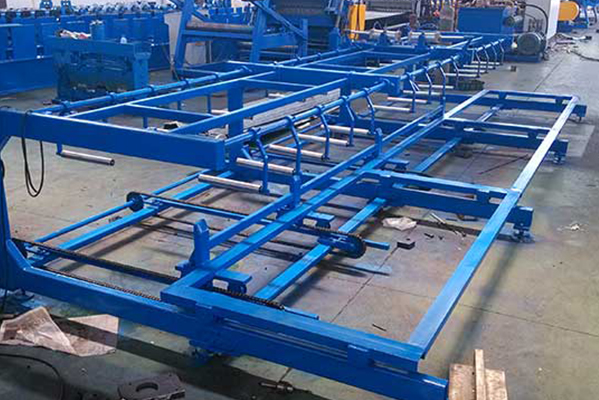Navigation Menu
Contact Us
- Email:
- info@wxavatar.com
- Address:
- Yurong Village, Yuqi Street, Huishan District, Wuxi, China.
Release Date:Oct 17, 2024 Visit:73 Source:ZCM Roll Forming Machine
In today's rapidly developing technological era, the healthcare industry is undergoing unprecedented changes. Among them, the application of auxiliary machines has become one of the key factors in improving surgical efficiency and quality. These high-precision and cutting-edge devices not only greatly enhance doctors' surgical abilities, but also significantly improve patients' treatment outcomes and rehabilitation processes.

In traditional surgery, doctors often need to rely on their own experience and touch to perform the operation, which undoubtedly increases the risk and uncertainty of the surgery. The emergence of auxiliary machines has provided doctors with more precise and reliable surgical tools. By integrating advanced sensors, machine vision, and artificial intelligence algorithms, auxiliary machines can analyze real-time image data of surgical sites, providing doctors with accurate navigation and feedback. This not only makes the surgical process more visual, but also greatly reduces errors caused by human factors.
In the field of minimally invasive surgery, assistive machines play a crucial role. Minimally invasive surgery has gradually become the preferred treatment for many diseases due to its advantages of minimal trauma and fast recovery. However, this type of surgery requires high surgical skills from doctors and has a limited surgical field of view. With the help of auxiliary machines, doctors can observe the surgical site more clearly and perform precise operations with tiny instruments, thereby minimizing trauma to patients while ensuring surgical effectiveness.
In addition, assistive machines have shown great potential in surgical planning, simulation, and training. By constructing a three-dimensional model of the patient, doctors can conduct detailed surgical planning before surgery, simulate the effects of different surgical plans, and thus choose the best treatment path. At the same time, auxiliary machines can also serve as teaching tools to help young doctors practice surgery in virtual environments, improving their operational skills and ability to respond to emergencies.
It is worth mentioning that the application of assistive machines has also promoted the optimized allocation of medical resources. With the improvement of surgical efficiency, hospitals can more effectively utilize operating room and medical team resources to provide patients with more timely and efficient medical services. This not only improves patient satisfaction, but also promotes the sustainable development of the healthcare industry.
Of course, the widespread application of assistive machines in the medical industry has also brought new challenges and opportunities. How to ensure the security, reliability, and data privacy protection of these devices has become an urgent problem to be solved. Meanwhile, with the continuous advancement of technology, we also look forward to the potential of assistive machines in more fields, bringing more innovation and breakthroughs to the medical industry.

In summary, auxiliary machines are gradually becoming an important force in improving surgical efficiency and quality in the medical industry due to their unique advantages. In the future, with the continuous maturity of technology and the expansion of applications, we have reason to believe that assistive machines will contribute more wisdom and strength to the cause of human health